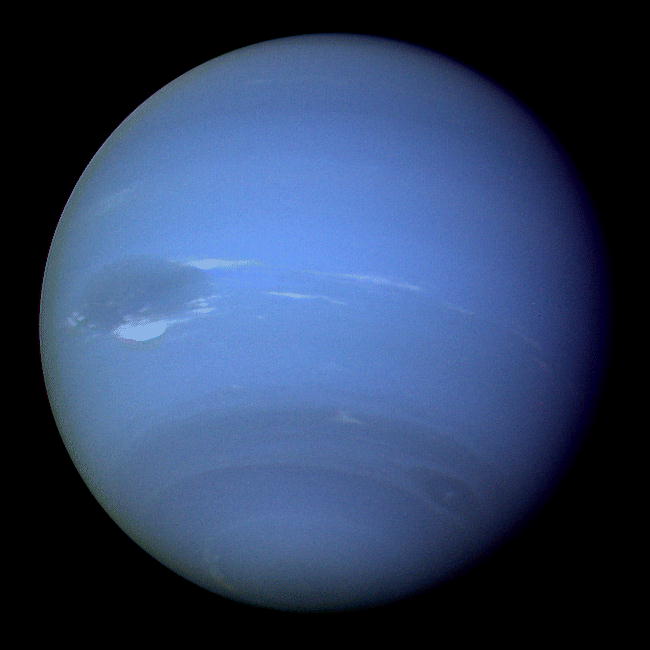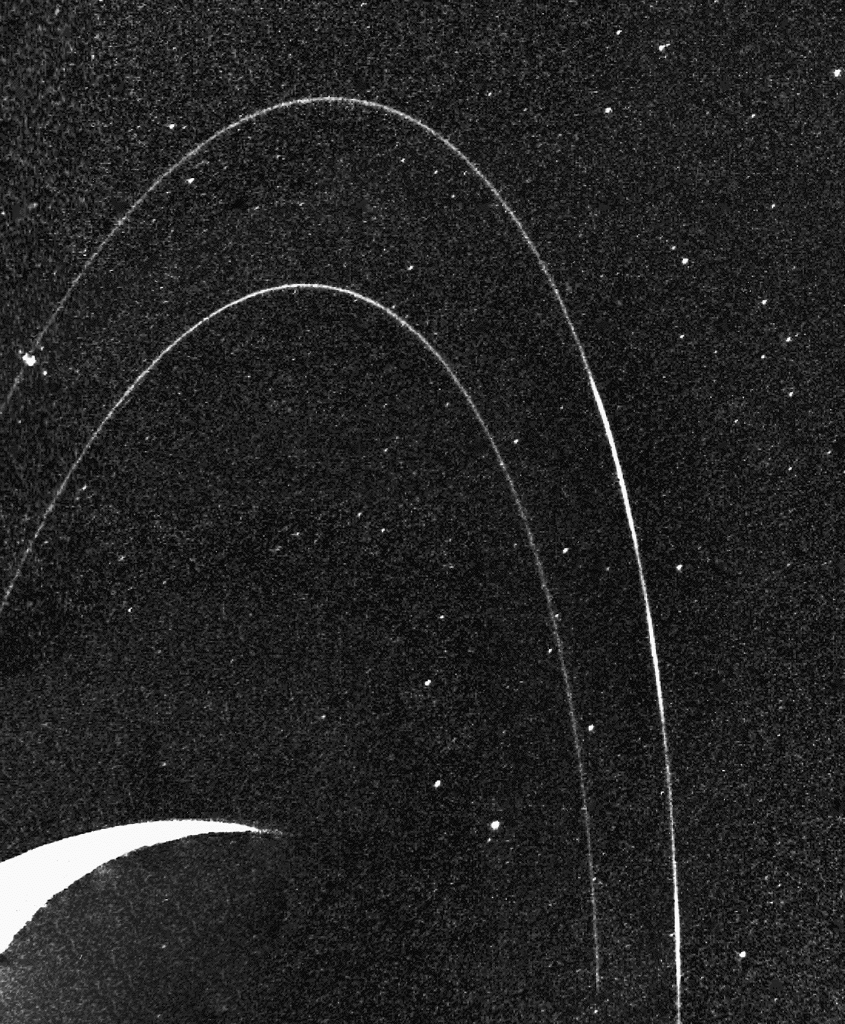 Neptune is blue by scattering from methane gas like Uranus.
Neptune is blue by scattering from methane gas like Uranus.
But it has more weather and white clouds of methane ice crystals.
Credit: NASA.
 Neptune and two of its narrow rings.
Neptune and two of its narrow rings.
LeVerrier is the inner ring and Adams is the outer one.
LeVerrier is actually uniform in structure (although it doesn't quite look that way), but Adams shows concentrations of particles that turn up as bright arcs.
Adams has four arcs of which three are visible in this image: Liberte, Egalite, Fraternite.
The arcs are probably due to gravitational perturbations of the 150 km diameter moon Galatea (SRJ-229) which is not seen in this image.
Credit: NASA.